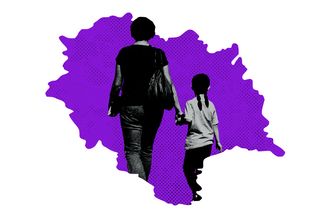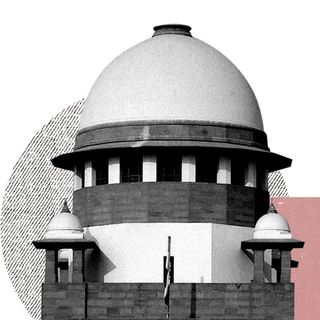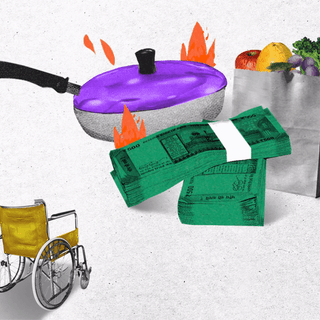
Himachal Pradesh Approves Six Month Maternal Leave for Adoptive Mothers
The move, announced on Tuesday, increases adoption leave from 12 weeks to 6 months — but it still falls short of recognizing adoptive mothers’ needs.

The Himachal Pradesh Government on Tuesday approved a proposal that will allow women employees of the state up to 6 months of leave on adopting a child. Earlier this year, in May, the same cabinet had announced a shorter, 12-week adoption leave for women employees, a provision that’s now been expanded.
The 12-week leave for adoptive mothers was one of the newer provisions in the Maternity Benefit (Amendment) Act, 2017. The amendment is often hailed as progressive for extending the period of maternity leave period to include adoptive mothers in its purview. However, there is a catch.
Biological mothers enjoy far greater benefits than adoptive mothers. Even under the new amendment, biological mothers are allowed up to 26 weeks of maternity leave, whereas adoptive mothers are only granted 12, overlooking the caregiving needs of an adoptive mother towards their child. Lawyer Hamsanaaduri Naidu, who is also an adoptive mother, told The Quint last year how India’s maternity policies affect adoptive parents, saying, “just because an adoptive mother may not have gone through the process of labour, doesn’t mean that the journey is easy. It comes with its own set of different challenges that need time, recognition, and support as well.”
The amendment further allows women to avail adoption leave from their employers only if their child is younger than three months old. The bureaucratic hoops one has to pass, however, ultimately result in very few people — if any — actually being able to avail of adoption leave.
Adoption in India is a contested issue rife with legal and bureaucratic hurdles. It’s governed under two different laws: the Hindu Adoption and Maintenance Act, 1956; and the Juvenile Justice (Care and Protection of Children) Act, 2015. There are several strict rules in place that determine the eligibility and suitability of prospective parents. These include parameters on composite age for couples, rules of adoption for single parents, a minimum duration of marriage for couples seeking to adopt, and the age of the prospective adopted child. A report from April by The Hindu lists the several regulations one must adhere to to be able to adopt a child.
Related on The Swaddle:
Report Finds GoI‑Sanctioned Adoption Homes Across India Neglectful
A 2021 report in Outlook mentions the real-life fallouts of these bureaucratic hurdles. Adoption is an arduous process in India that can at times take up several years before a request for adoption is approved. Additionally, single parents are often not preferred for adoption and are made to wait even longer. In one case, when a woman sought to adopt her house help’s daughters, court intervention eventually separated the children from both their biological mother and their prospective adoptive mother.
Given these obstacles, adoptive mothers necessarily have different caregiving and infrastructural needs as compared to biological mothers. While the current policies allow for adoptive mothers to avail of maternal leave after a successful adoption, work culture is yet to accommodate the adoption process itself as an integral part of parental leave. The taboo around adoption in India also plays a role in this invisibilization of the caregiving needs of adoptive parents.
Last year, when the Karnataka State Government announced a 180-day adoption leave for its women workers, T R Vedhavathi, then state treasurer, explained to Deccan Herald how the move could also remove the taboo around adoption by recognizing adoption leave as an employee right. “If they have adopted at an older age, there is still some stigma about announcing it and they may opt for using their own leaves. Awareness has to be created even about this issue.”
Child rights activist Vasudeva Sharma also feels that an official recognition of adoptive parents’ requirements can help fight the stigma that adoption carries. “This will help emphasize that adopted children are just like biological children. In several instances, people even shift houses after they adopt, owing to the stigma,” he had told Deccan Herald.
In April 2022, the Supreme Court of India took note of these hurdles while hearing a petition filed by an NGO and subsequently issued a notice to the Union Government about the issue. The petition pointed out that only 4,000 adoptions had taken place during the previous year whereas there were about 3 crore orphan children. The petition blamed this disparity between dismal adoption figures and the number of orphans on the arduous and complicated bureaucratic process that one must pass through to be eligible to adopt.
That the Maternity Benefit (Amendment) Act, 2017, recognizes that adoptive mothers too need to take some time off to tend to their children, represents some progress. However, the legislation still falls short of recognizing the reality of adoption in the country. Similarly, the order by the Himachal Pradesh state government might be beneficial to adoptive mothers only if the state takes into consideration the difficulties adoptive mothers face while adopting, and make provisions in their law to either remove or expand the child age limit for adoptive mothers to avail adoption leave.
Adoption in India is still taboo. Societies place immense value on women conceiving, and on the purity of blood and lineage that they seek to maintain. Often, adoption is thought of only as a last resort when all attempts at conception have failed, and the adoptive parent and adopted child are not treated on parity with biological mothers and children. Although some people have begun to challenge the taboo, the fight has been slow. Destigmatizing adoption, then, has many facets: legislation that doesn’t perceive adoptive mothers to be less valid than biological mothers is one of them.
Amlan Sarkar is a staff writer at TheSwaddle. He writes about the intersection between pop culture and politics. You can reach him on Instagram @amlansarkr.
Related


‘Domestic, Unmarried Partnerships or Queer Relationships’ Also Constitute a Family: Supreme Court
